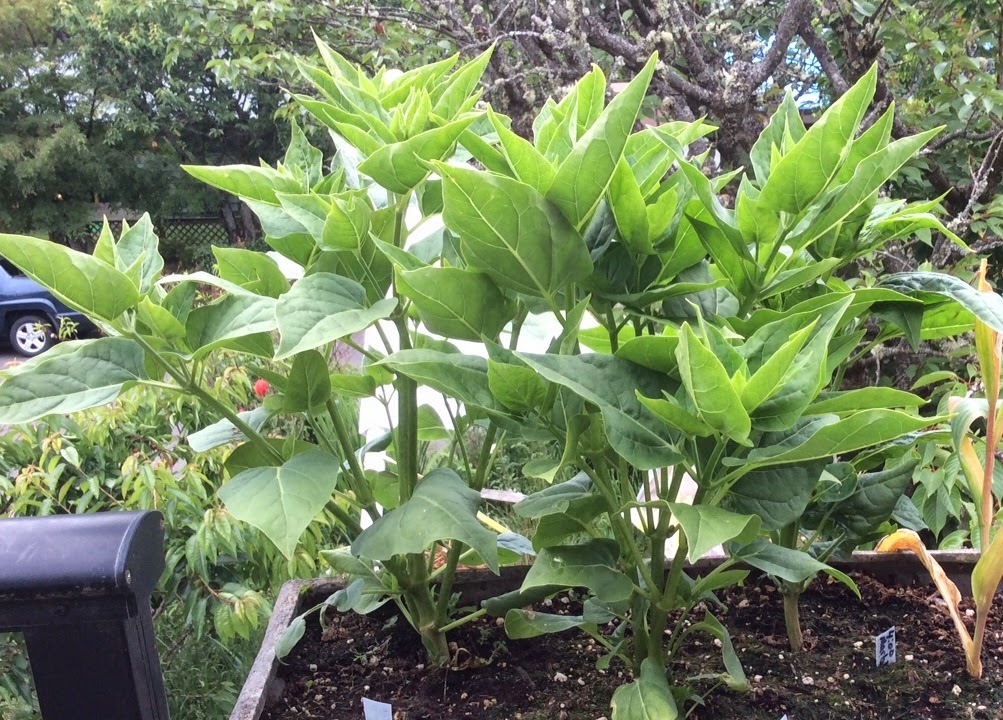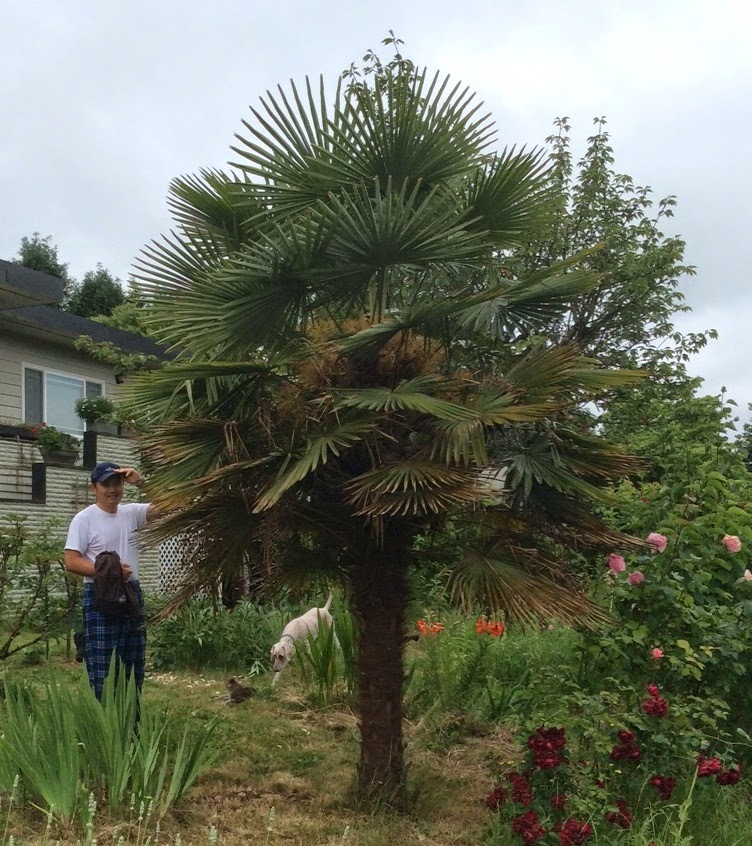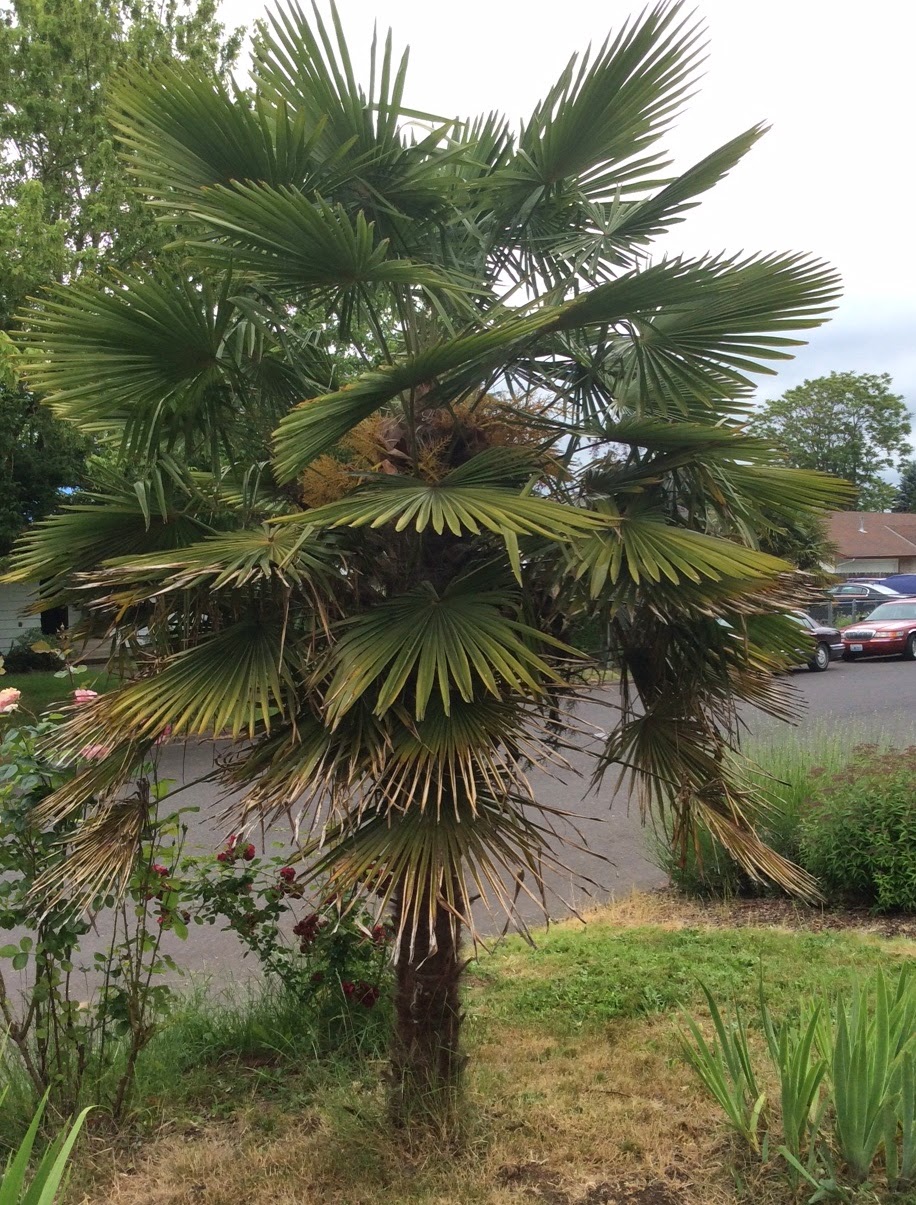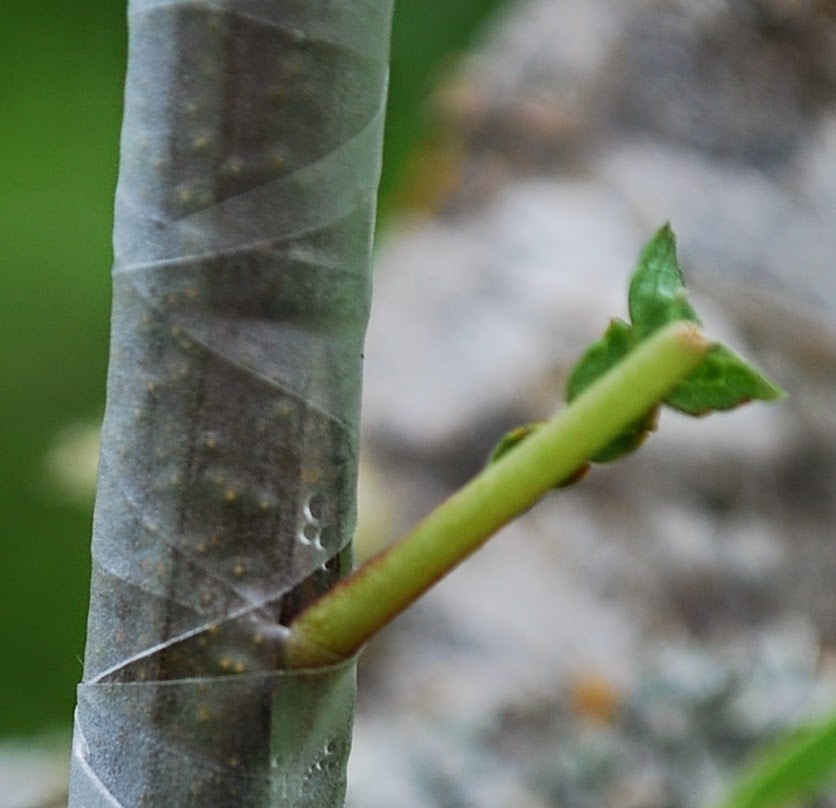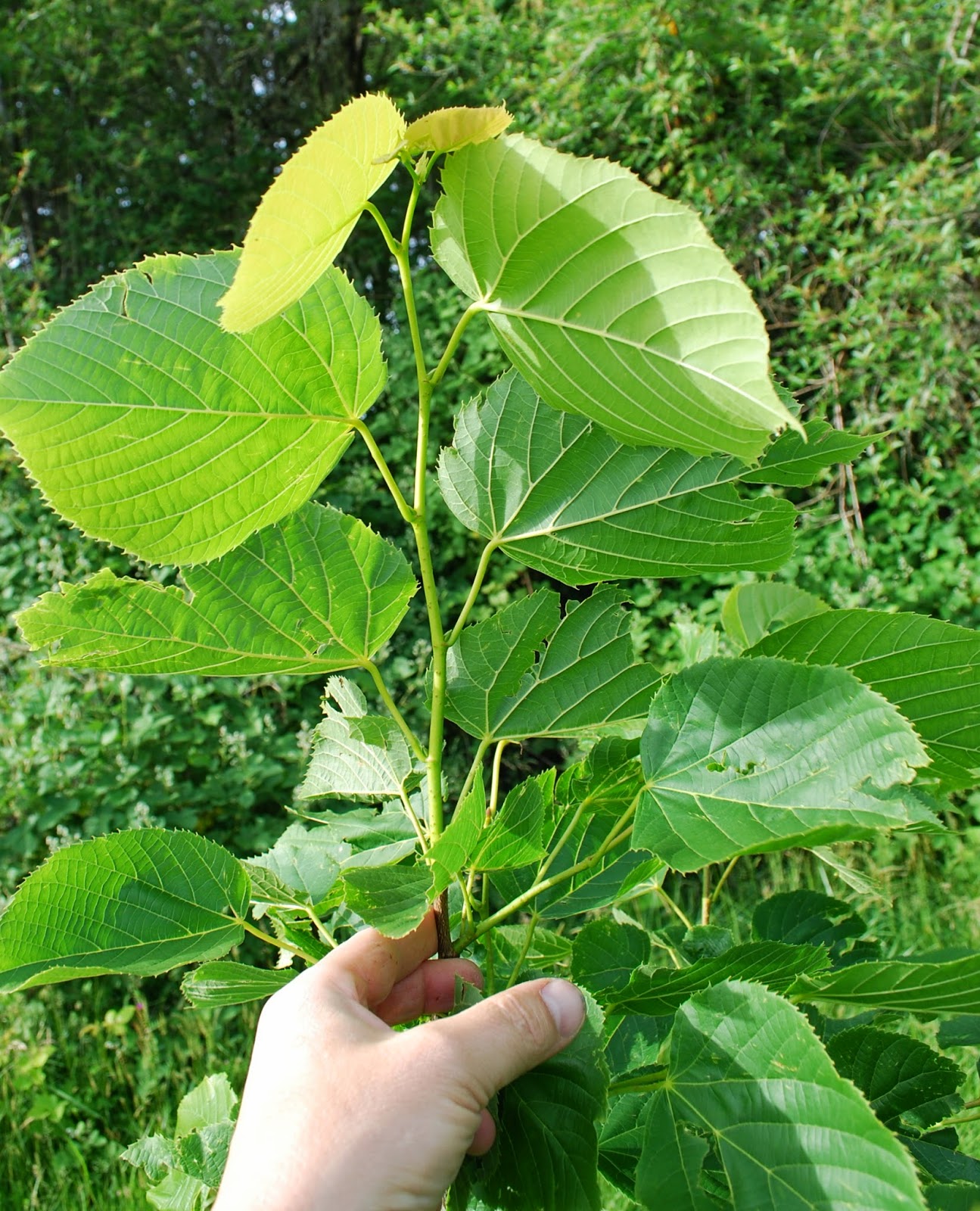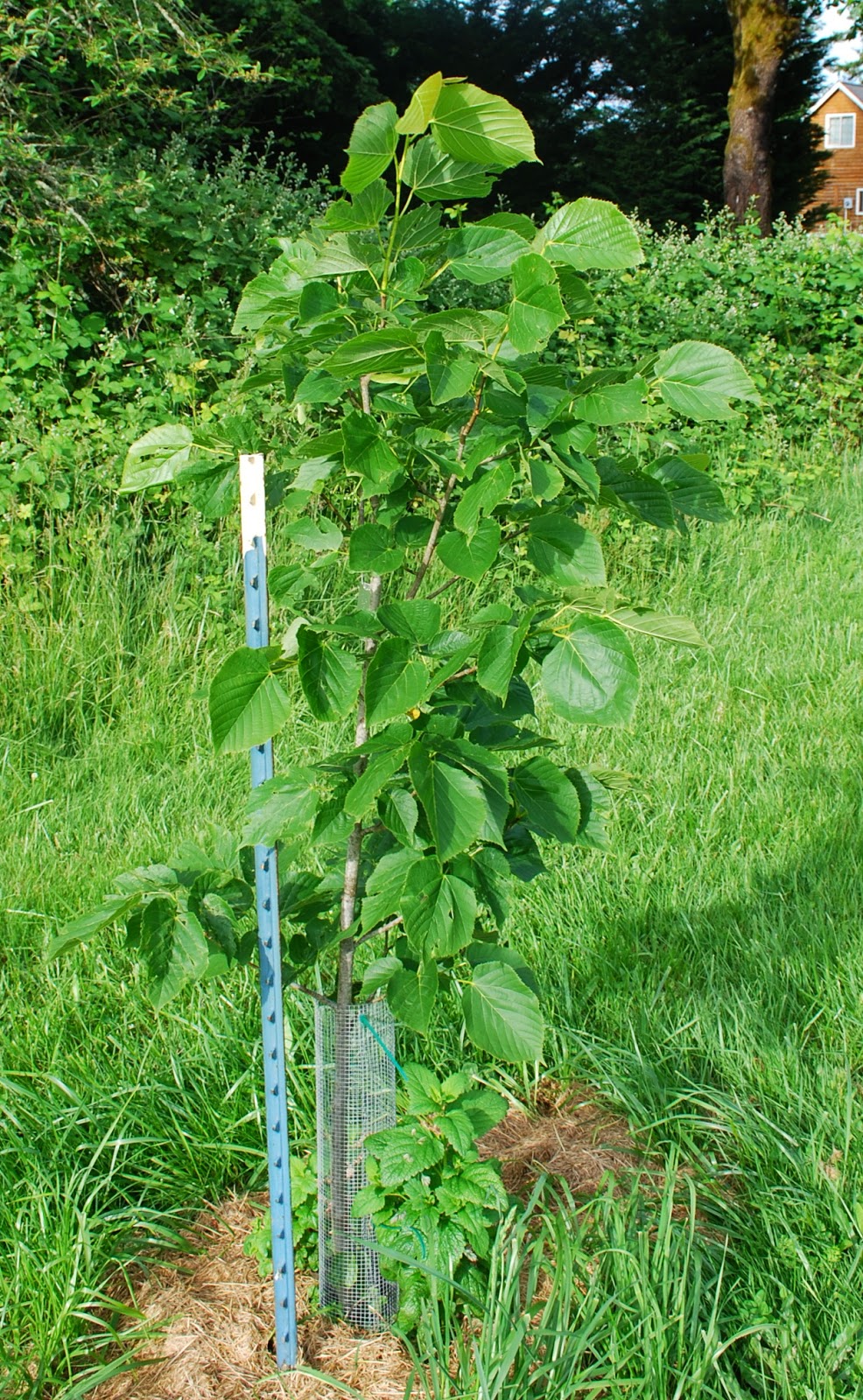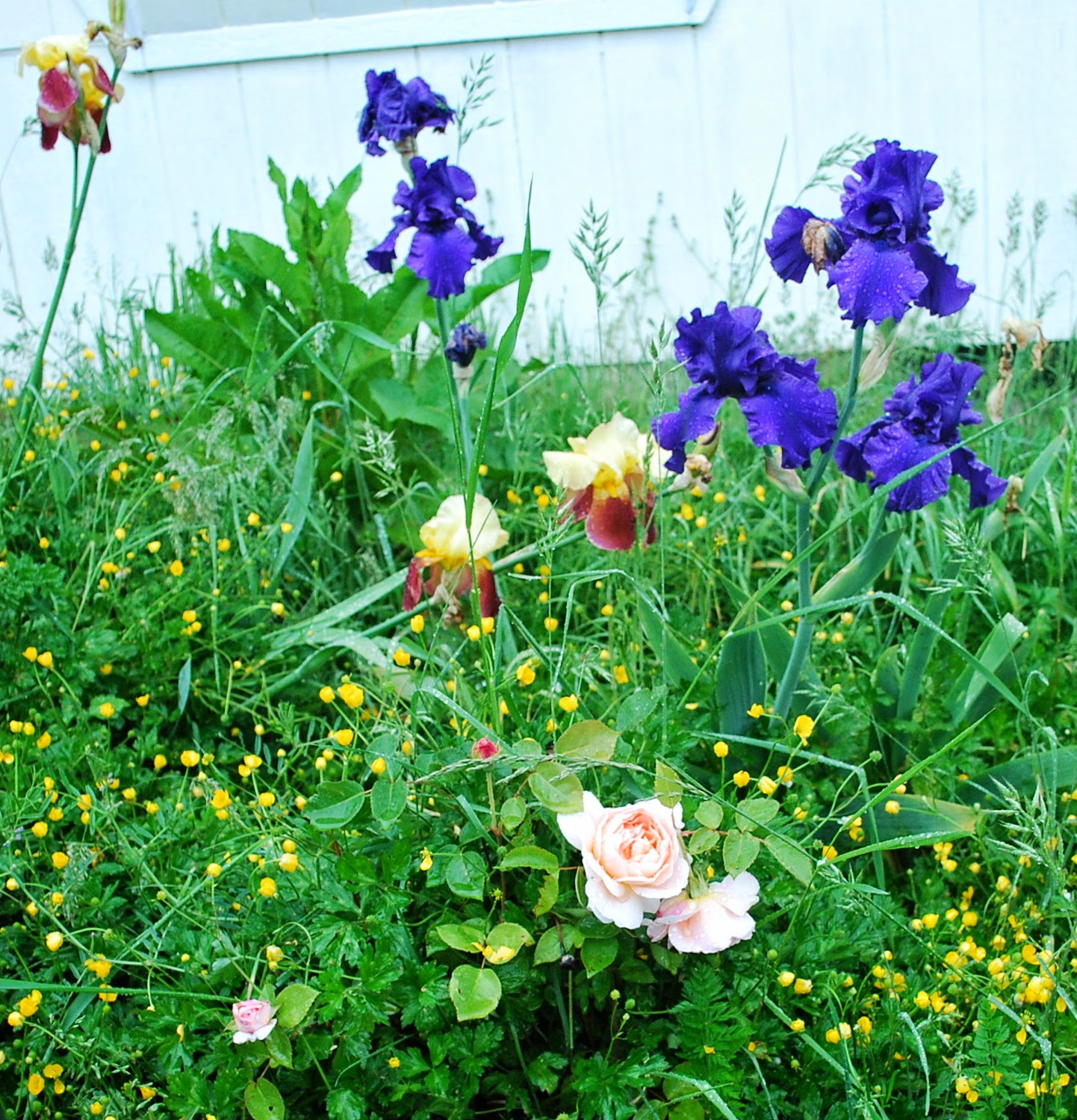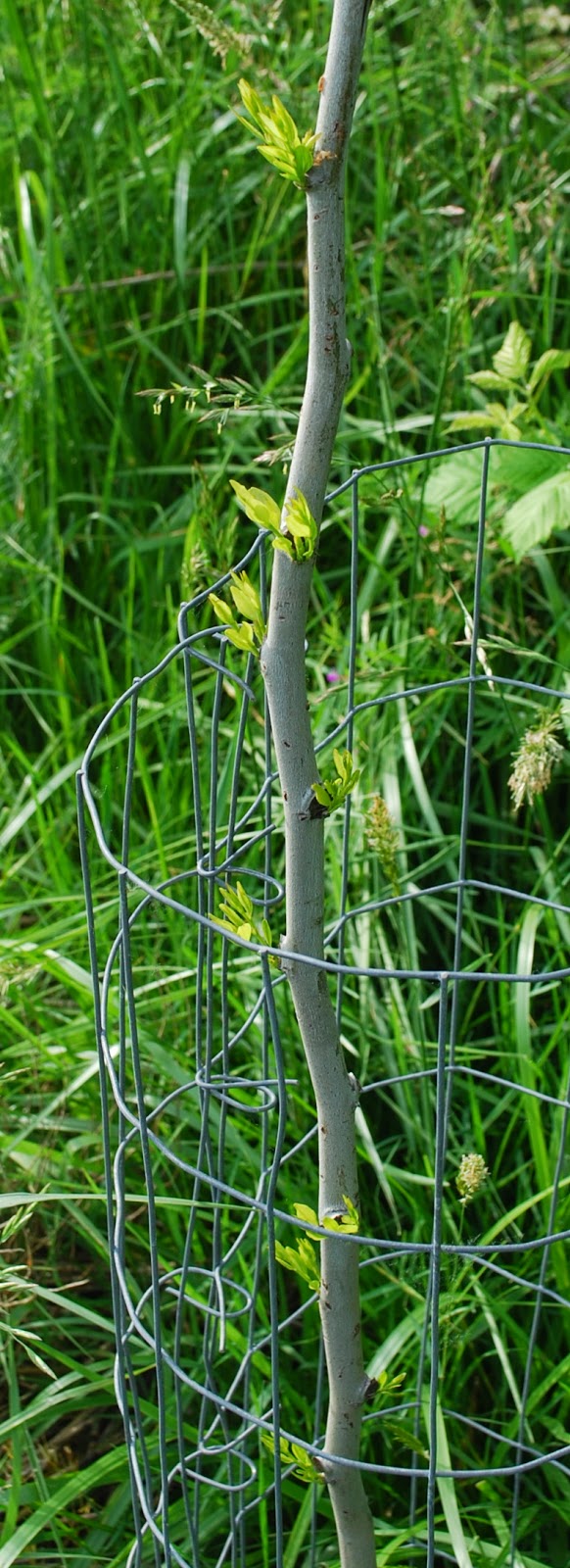 |
| Asian pear graft. Recovery from deer chewing. |
 |
| Hamese Asian Pear Graft. |
 |
| Euro Pear graft on Asian Pear |
Plant propagation and grafting efforts. Many of them did well. A few did not grow.
All of the
pear grafts took. One was chewed by deer but is recovering. Some bloomed. That resulted in a delay of growth, but ultimately they all grew. That includes the 3 varieties of Asian pear, on an Asian pear tree. and 2 varieties of European pear on a different Asian pear tree.
Learnings -
1. Don't leave a long tail on the whip. The graft still takes, but the tail doesn't always callous onto the stock, leaving an appendage.
2. Best to take scion wood that doesn't look like it will bloom.
 |
| Close-up Healing Whip and Tongue, Pear |
 |
| Liberty Apple Graft on Honeycrisp |
All of the
apple grafts also took. The learnings were the same as for pear.
I should probably remove the liberty apple from the newly grafted scion from this spring, but it looks ok and I think I will leave it to see what happens. The scion is growing rapidly despite also making an apple.
I unwrapped most of the rest today. They have finished formation of callous, so no benefit to leaving them longer. The wrapping did not strangle the new growth. So this was a good time.
Of the
grafted lilacs, it looks like only one of the approximately 6 grafts took. I don't know why. It might be timing, or lilacs might be more difficult to graft. Or there may have been compatibility issues.
Still I am excited that one did take and is growing vigorously.
All three of the
lilac offsets that I separated from mature bushes, grew. One was eaten by deer or rabbits, but is recovering.
Laburnums, grown from cuttings late Winter 2013, are growing. They were eaten by deer or rabbits, but are recovering. I had to move them again, because of an easement issue.
Ning started
pussy willows from cuttings. He started a hedge. These were just pencil thick, or thicker, and about 18 inches to 2 feet long, taken from a big pussy willow at the Vancouver place. He simply pushed the cuttings into the moist ground, about half way, in Feb. All are growing. Willows are very easy.
I updated on plum cuttings already. All approx 8
Hollywood plum cuttings struck. None of the approx 8
Shiro plum cuttings struck. About 1/2 of the approx 8
flowering quince cuttings struck, but they are not growing vigorously. The
forsythia cuttings are touch and go. 2 still seem alive.
 |
| Lilac Growth on Separated Offset |
 |
| Shinseiki Asian Pear Graft |
 |
| Laburnum from Cutting. Year 2. |
 |
| Pussy Willow from Cutting. Year 1. |
 |
| Jonagold dwarf apple graft. |
